| Listing 1 - 10 of 70 | << page >> |
Sort by
|
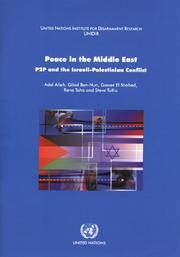
ISBN: 1423727290 9781423727293 9290451696 9789290451693 Year: 2005 Publisher: [Place of publication not identified] United Nations Institute for Disarmament Research
Abstract | Keywords | Export | Availability | Bookmark
 Loading...
Loading...Choose an application
- Reference Manager
- EndNote
- RefWorks (Direct export to RefWorks)
Book
ISBN: 1316587037 1316148505 1107094690 1107476631 9781107094697 9781107476639 1316585778 Year: 2016 Publisher: New York: Cambridge university press,
Abstract | Keywords | Export | Availability | Bookmark
 Loading...
Loading...Choose an application
- Reference Manager
- EndNote
- RefWorks (Direct export to RefWorks)
Elam was an important state in southwestern Iran from the third millennium BC to the appearance of the Persian Empire and beyond. Less well-known than its neighbors in Mesopotamia, Anatolia, the Levant or Egypt, it was nonetheless a region of extraordinary cultural vitality. This book examines the formation and transformation of Elam's many identities through both archaeological and written evidence, and brings to life one of the most important regions of Western Asia, re-evaluates its significance, and places it in the context of the most recent archaeological and historical scholarship. The new edition includes material from over 800 additional sources, reflecting the enormous amount of fieldwork and scholarship on Iran since 1999. Every chapter contains new insights and material that have been seamlessly integrated into the text in order to give the reader an up-to-date understanding of ancient Elam.
Middle East --- Regions & Countries - Asia & the Middle East --- History & Archaeology --- Elam --- Susiana --- Elimais --- Elamtu --- Elymaide --- Elamite --- Eilam --- Antiquities. --- History. --- Elam - Antiquities --- Elam - History
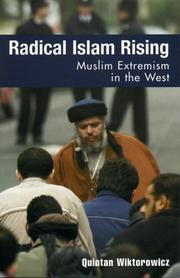
ISBN: 9780742536418 0742536416 Year: 2005 Publisher: Lanham: Rowman & Littlefield,
Abstract | Keywords | Export | Availability | Bookmark
 Loading...
Loading...Choose an application
- Reference Manager
- EndNote
- RefWorks (Direct export to RefWorks)
Islam --- Muslims --- Islamic fundamentalism --- Terrorism --- Islam and politics --- the Muhajiroun movement --- radicalisation of Western Muslims --- the Middle East conflicts --- militant Islam organizations --- terrorism --- Jihad --- religious violence --- al-Muhajiroun
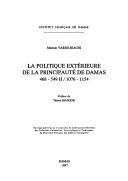
ISBN: 2901315356 2351594916 9782901315353 Year: 1997 Volume: 163 Publisher: Damas: Institut français de Damas,
Abstract | Keywords | Export | Availability | Bookmark
 Loading...
Loading...Choose an application
- Reference Manager
- EndNote
- RefWorks (Direct export to RefWorks)
L'analyse des sources arabes, manuscrites comme éditées, permet de reconstituer l'histoire de la principauté de Damas, de 1076 (date de sa constitution au départ des troupes fatimides qui occupaient la ville) jusqu'en 1154 (prise de la cite par le prince zankide Nur al-Din et, ainsi, formation d'un grand État de Syrie et Gazira). Cette étude s'attache a suivre la politique extérieure des maitres successifs de Damas, face aux Fatimides, aux Salguqides, puis aux Francs et petites principautés.
Damascus (Syria) --- Syria --- Islamic Empire --- History --- Regions & Countries - Asia & the Middle East --- History & Archaeology --- Middle East --- -Islamic Empire --- -Syria --- Arab countries --- Arab Empire --- Empire, Islamic --- Muslim Empire --- -History --- -Regions & Countries - Asia & the Middle East --- History. --- Damascus (Syria) - History --- Syria - History - 750-1260 --- Islamic Empire - History - 750-1258 --- politique extérieure --- Syrie --- Jihad --- Damas --- guerre --- Fatimides
Book
ISBN: 2705306706 2351594622 9782705306700 Year: 1992 Volume: 133 Publisher: Paris: Geuthner,
Abstract | Keywords | Export | Availability | Bookmark
 Loading...
Loading...Choose an application
- Reference Manager
- EndNote
- RefWorks (Direct export to RefWorks)
This work is an attempt to apply the serial method to the study of the countryside in Roman and Byzantine times, in a region of northern Syria: the Limestone Massif, where very large numbers of remains and in excellent state of conservation of ancient villages and their parcels. In this region forty-six villages were selected as a sample. They are divided into three groups, where they form complete sets, in the ğebels Simā'n, Bārīšā, Il A'la and Zāwiye. They total 4,700 rooms reserved for men's homes and as many intended for economic functions, ie a population which must have peaked at around 20,000 inhabitants. Beyond the permanence of the agrarian landscapes and the main characteristics of the economy and society, this region experienced two major phases of expansion, one until the middle of the third century, the other from 330 to 550.The second phase, the best known, is marked by a considerable increase in the number of men and by an economic progress which has taken on an extensive form, enlargement of the land, then intensive, diversification of production with a view to sale. All in all, this population grew, while growing richer, in a context of urban expansion, which proves that the wealth of the cities and that of the countryside, far from being mutually exclusive, were complementary. In the middle of the sixth century, the gap widened between the number of men, which still tended to increase, and resources which levelled off, resulting in a long period of economic stagnation and impoverishment marked, in the short term, by severe subsistence crises and epidemics. Construction activity stops but the villages remain densely populated. The Islamic conquest does not entail any major consequences in the material life of the peasants. Their abandonment will not begin until the beginning of the 8th century, with the decline of the Umayyad Caliphate.
Excavations (Archaeology) --- -Syria --- Antiquities. --- Syria --- Antiquities --- Regions & Countries - Asia & the Middle East --- History & Archaeology --- Middle East --- Excavations (Archaeology) - Syria. --- Syrie --- Empire romain --- Syrie antique --- Moyen-Orient antique --- Empire byzantin --- géographie historique --- archéologie

ISBN: 0028659287 9780028659282 9780028659299 0028659295 9780028659305 0028659309 9780028659312 0028659317 9780028659329 0028659325 9780028659336 0028659333 9780028659343 0028659341 9780028659350 002865935X 9780028659367 0028659368 9780028659374 0028659376 9780028659381 0028659384 9780028659398 0028659392 9780028659404 0028659406 9780028659411 0028659414 9780028659428 0028659422 9780028659435 0028659430 9780028659442 0028659449 9780028659459 0028659457 9780028659466 0028659465 9780028659473 0028659473 9780028659480 0028659481 9780028659497 002865949X 9780028659503 0028659503 9780028659914 9780028660974 0028660978 Year: 2007 Publisher: Detroit: MacMillan,
Abstract | Keywords | Export | Availability | Bookmark
 Loading...
Loading...Choose an application
- Reference Manager
- EndNote
- RefWorks (Direct export to RefWorks)
Provides an exhaustive and organized overview of Jewish life and knowledge from the Second Temple period to the contemporary State of Israel, from Rabbinic to modern Yiddish literature, from Kabbalah to "Americana" and from Zionism to the contribution of Jews to world cultures, Encyclopaedia Judaica, 2nd edition is important to scholars, general readers and students.
Jews --- Judaism --- Juifs --- Judaïsme --- Encyclopedias --- Encyclopédies --- Judaïsme --- Encyclopédies --- Judaisme--Naslagwerken. Referentiewerken --- History of civilization --- Jewish religion --- Israel --- 296 <03> --- Regions & Countries - Asia & the Middle East --- History & Archaeology --- Middle East --- Jews - Encyclopedias. --- Judaism - Encyclopedias.
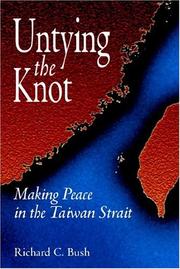
ISBN: 9780815712909 0815712901 081571288X 9780815712886 Year: 2005 Publisher: Washington (D.C.): Brookings Institution,
Abstract | Keywords | Export | Availability | Bookmark
 Loading...
Loading...Choose an application
- Reference Manager
- EndNote
- RefWorks (Direct export to RefWorks)
"A comprehensive analysis of the paradoxical relationship between Taiwan and China, characterized by social and economic interaction and political and military tensions, and the diplomatic diffidence of the United States in the face of its high strategic stakes"--Provided by publisher.
Taiwan --- China --- Relations --- Taiwan - Relations - China. --- Regions & Countries - Asia & the Middle East --- History & Archaeology --- East Asia --- S26/0515 --- Taiwan--China's claim to Taiwan (and vice-versa) --- International relations. Foreign policy --- Taiwan - Relations - China --- China - Relations - Taiwan
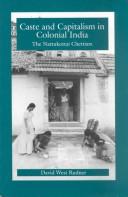
ISBN: 0520072367 0520083504 0585132208 9780520072367 9780520083509 Year: 1994 Publisher: Berkeley: University of California press,
Abstract | Keywords | Export | Availability | Bookmark
 Loading...
Loading...Choose an application
- Reference Manager
- EndNote
- RefWorks (Direct export to RefWorks)
Nattukottai Chettiars. --- Caste --- India --- Commerce --- Nattukottai Chettiars --- Regions & Countries - Asia & the Middle East --- History & Archaeology --- South Asia --- Chetti, Natkutai --- Chettiars, Nattukottai --- Nagarathars --- Natkutai Chetti --- Manners and customs --- Ethnology --- Vaisyas --- History. --- Caste - India - Tamil Nadu. --- India - Commerce - History.
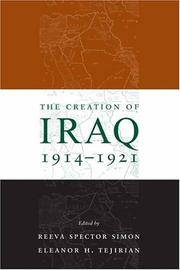
ISBN: 0231132921 023113293X 0231509200 9780231132923 9780231132930 9780231509206 Year: 2004 Publisher: New York, NY : Columbia University Press,
Abstract | Keywords | Export | Availability | Bookmark
 Loading...
Loading...Choose an application
- Reference Manager
- EndNote
- RefWorks (Direct export to RefWorks)
Leading scholars consider Iraq's history and strategic importance from the vantage point of its residents, neighbors (Iran, Turkey, and Kurdistan), and the Great Powers.
Iraq --- Great Britain --- History --- Relations --- Middle East --- Regions & Countries - Asia & the Middle East --- History & Archaeology --- Iraq - History - 1534-1921 --- Iraq - History - Revolt, 1920 --- Great Britain - Relations - Iraq --- Iraq - Relations - Great Britain
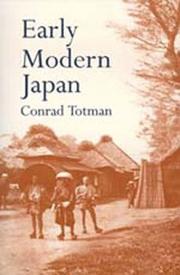
ISBN: 052091726X 0585108390 9780520917262 9780585108391 0520203569 9780520203563 9780520080263 0520080262 0520080262 Year: 1995 Publisher: Berkeley : University of California Press,
Abstract | Keywords | Export | Availability | Bookmark
 Loading...
Loading...Choose an application
- Reference Manager
- EndNote
- RefWorks (Direct export to RefWorks)
This thoughtfully organized survey of Japan's early modern period (1568-1868) is a remarkable blend of political, economic, intellectual, literary, and cultural history. The only truly comprehensive study in English of the Tokugawa period, it also introduces a new ecological perspective, covering natural disasters, resource use, demographics, and river control.
| Listing 1 - 10 of 70 | << page >> |
Sort by
|

 Search
Search Feedback
Feedback About UniCat
About UniCat  Help
Help News
News